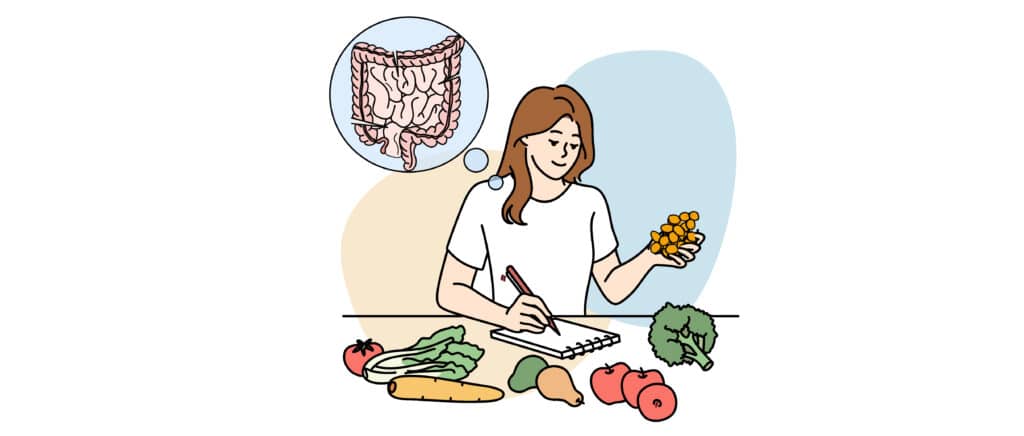Blood Sugar Control in Diabetes: Keeping Your Sweet Balance
- Date Benefits & Uses
- September 29, 2023
- 17 minutes read
- Diabetes is a condition that affects how your body handles sugar and insulin, and it comes in two types: Type 1 and Type 2.
- High blood sugar leads to thirst and frequent urination, while low blood sugar causes shaking and confusion.
- Monitoring tools like CGM, blood sugar meter, and AIC tests help you track your sugar levels.
- What you eat can change your sugar levels. Exercise can also help your body use sugar better. Stress and sleep are important too, so it’s a good idea to relax and eat a balanced diet.
- Medications like insulin and metformin, along with CGM devices and advice from healthcare professionals, can help you control your blood sugar and stay healthy.
Diabetes affects many people worldwide, and it’s important to keep your body in balance. Think of it like a puzzle where each piece needs to fit just right. In this guide, we’ll help you understand how to balance level of blood sugar in diabetes. You’ll learn how to take care of your health and well-being in a way that’s easy to follow.
Understanding Blood Sugar in Diabetes
Your body works like a car that needs fuel to move. The fuel is called glucose, and it comes from the food you eat. Glucose gives you energy, like the gas that makes a car go. Insulin is like a key that helps glucose enter your cells where it’s needed. In diabetes, this teamwork can get mixed up.
There are two main kinds of diabetes: Type 1 and Type 2. For Type 1 diabetes, the body doesn’t have enough insulin. In Type 2 diabetes, the body has trouble using insulin properly.
Hyperglycemia: High Blood Sugar Levels
Hyperglycemia means your blood sugar levels are too high, like a glass of water overflowing. If you don’t take care of it, it can lead to problems. At first, you might not notice much, but you could get more thirsty, go to the bathroom a lot, feel tired, or have trouble seeing clearly. Over time, high blood sugar can damage your blood vessels, nerves, and organs. It’s like a leak in your roof that needs fixing.
Hypoglycemia: Low Blood Sugar Levels
On the other hand, hypoglycemia means your blood sugar is too low. This can happen if you skip meals, exercise a lot, or take too much medicine. Your body might shake, you might sweat a lot, you might feel confused, or you might even pass out if it gets really low. When this happens, you need a snack with carbohydrates to bring your blood sugar back up. Think of it as getting a quick snack to recharge your energy.
Checking and Controlling Level of Blood Sugar
Checking your blood sugar is like checking the weather before going outside. It helps you know what’s happening in your body. You can use a continuous glucose monitor (CGM), which is a gadget that keeps track of your blood sugar nonstop.
Another way is to check your blood sugar at home using a handy electronic device known as a blood sugar meter. It only needs a tiny drop of your blood to do the test.
The third way is the A1C test, which is like a report card that shows your average blood sugar over a few months. It helps you and your healthcare team see how well you’re managing your diabetes. Just like a navigator relies on maps to steer a ship, your healthcare team relies on these tests to guide your health journey.
Lifestyle Factors Affecting Level of Blood Sugar
Imagine your body as a team working together for a big game. Nutrition, exercise, stress management, and sleep are like players on your team, each doing their part to win.
Nutrition: Fueling Your Body Right
Exercise: Move to Feel Good
When you move around, your muscles use glucose, which lowers your blood sugar levels. Try doing activities like walking or swimming or playing sports such as basketball or soccer with friends. Mixing in some strength exercises, such as lifting weights or doing push-ups, is also great for building muscle and keeping fit.
But wait, if you find ketones in your urine, take a break from exercising. Think of ketones as special fuel bits that your body makes from breaking down fat when it needs energy. This happens when there’s not enough insulin around to help sugar get into your cells. Your liver steps in and starts making these fuel bits called ketones to give your body the energy it needs. Exercising when there are ketones can make your blood sugar go up even more, so it’s best to wait until they’re gone.
Stress Management: Find Your Calm
When you’re stressed out about something, your body releases hormones that can make your blood sugar go up. Relaxing activities such as deep breathing exercises or meditation can help calm down those stress hormones and keep your blood sugar steady. Doing things that you enjoy, such as reading books or playing video games, can also help reduce stress.
Sleep: Rest for Success
Sleep is another important factor when it comes to managing blood sugar levels. Think of sleep as recharging the batteries of all those little cells in our bodies. When we don’t get enough sleep, our bodies don’t work as well as they should. This can cause our blood sugar levels to go up.
Getting enough sleep each night helps our bodies rest and recover so we can be ready for another day. Try setting up a bedtime routine such as taking a warm bath or reading before bed to help relax and fall asleep easier.
Medications and Treatments for Blood Sugar Control
Medications are like tools in a toolbox, each with a job to do in keeping your blood sugar in line. Sometimes, your body needs a little extra help to control blood sugar. That’s where insulin and other diabetes medicines come in. They help lower your blood sugar when eating healthy and being active aren’t enough. But remember, the way these medicines work depends on when and how much you take them. Also, if you take other medicines for different reasons, they can affect your blood sugar.
Metformin is a medication for people with type 2 diabetes. It tells your body to take in less sugar from the food you eat and slows down the liver’s sugar-making factory. Plus, it helps your body listen better to insulin. But remember, metformin doesn’t work for type 1 diabetes, where the body can’t make insulin.
The American Diabetes Association (ADA) suggests some general blood sugar numbers:
- Before meals: Aim for 80 to 130 mg/dL (4.4 to 7.2 mmol/L.
- About 2 hours after eating: It’s good to be under 180 mg/dL (10.0 mmol/L).
But remember, these numbers can be a bit different for different people, like those who are 60 or older or have other health conditions.
Your healthcare provider will pick the right range based on things like the type of diabetes you have, your age, how long you’ve had diabetes, and other health factors. They will help you stay on track and avoid bumps on the road. They can help you choose the right medications and treatments to keep your blood sugar levels steady.
Tips for Maintaining Stable Level of Blood Sugar
Keeping your blood sugar steady isn’t just about numbers but about keeping your whole body healthy. High blood sugar can hurt your blood vessels and put you at risk for heart disease and stroke. Eating healthy foods, exercising regularly, and taking medications as prescribed can help lower your risk of these problems.
Care for your eyes and feet.
High blood sugar can hurt the blood vessels in your eyes and cause vision problems. Getting regular eye check-ups and keeping your blood sugar steady is like putting an umbrella over your eyes. Also, diabetes can make your feet feel strange, so taking good care of them and wearing comfortable shoes is important. Checking your feet regularly for cuts or sores and keeping them clean and dry can help prevent problems.
Create a balanced meal plan.
A meal plan will guide you on when, what, and how much to eat. A great meal plan takes into account your preferences, what you want to achieve, and even the medicines you’re using. A smart meal plan also puts more non-starchy veggies on your plate, like broccoli, spinach, and green beans. Opt for foods that contain lower amounts of added sugar and processed grains, such as white bread or pasta. Look for options that provide less than 2 grams of fiber per serving. Prefer whole foods over highly processed ones. Just like picking fresh fruits instead of sugary snacks.
Drink more water.
Drinking lots of water is important if you have diabetes. Water helps your kidneys do their job and get rid of extra sugar and waste through urine. When your sugar levels are high, your body wants to get rid of the extra sugar, which can make you thirsty and dry out. But when you drink enough water, you can stop that from happening and help your body stay strong. Plus, when you’re hydrated, you’ll feel more energetic and better overall.
Take care of your mind.
Diabetes can bring feelings like stress and sadness, and it’s important to take care of your mind just like your body. Mindfulness is a simple way to feel more relaxed. You can use apps to help you, and you don’t need to do it for a long time. Even a few minutes can already make you feel better. Some young people tried it for 25 minutes over three days and felt calmer. So, whenever you feel worried or stressed, take a short break to be mindful.
Guard your mental health.
Stress, worry, and sadness can make your blood sugar go up. But doing things like mindfulness, meditation, and talking to friends can help your mind stay calm. Taking breaks from stressful situations or doing activities that you enjoy, such as painting or playing music, can also help reduce stress.
Your Path to Good Health
Now you know how to take care of your blood sugar and manage your diabetes. It’s like having a treasure map that leads to a healthy and happy life. You’ve learned the keys to keeping your blood sugar in check. It’s like knowing how to ride a bike or bake your favorite cookies—you’ve got it down.
By working with your healthcare team and following these simple steps, you’re on your way to feeling your best. Remember, your health journey is like an exciting adventure, and you’re the hero! So keep moving forward, stay positive, and enjoy all the wonderful things life has to offer.
Summary
Your body gets energy from a kind of fuel called glucose in the food you eat. Insulin acts like a key to help glucose go into your cells. But in diabetes, this balance can go wrong, causing Type 1 or Type 2 diabetes.
If your blood sugar gets too high, you might feel thirsty, need to urinate a lot, get tired, or have trouble seeing. If it gets too low, you might shake, sweat, feel confused, or even faint.
Checking your blood sugar often is important. You can use things like monitors, meters, or tests like the A1C test.
Eating good foods, moving around, handling stress, and getting enough sleep are all important for balancing the level of blood sugar in diabetes. Medicines like insulin and metformin can help too.
By collaborating with healthcare professionals and embracing these guidelines, individuals can achieve better well-being.
Scientific Information
- Glucose is a type of sugar that comes from the food you eat. It serves as the main source of energy for your body’s cells.
- Insulin is a hormone produced by the pancreas that helps regulate the amount of glucose in your blood. It acts like a key, allowing glucose to enter your cells and be used for energy.
- Type 1 Diabetes is a type of diabetes in which the body does not produce enough insulin. This results in high blood sugar levels because glucose cannot enter the cells properly.
- Type 2 Diabetes is a type of diabetes in which the body does not use insulin effectively. This also leads to high blood sugar levels because cells are resistant to the effects of insulin.
- Hyperglycemia is a condition characterized by high levels of sugar (glucose) in the blood. It can lead to symptoms such as increased thirst, frequent urination, fatigue, and vision problems.
- Hypoglycemia is a condition characterized by low levels of sugar (glucose) in the blood. It can cause symptoms like shakiness, sweating, confusion, and fainting.
- Continuous Glucose Monitor (CGM) is a device that continuously measures blood sugar levels and provides real-time information to the user.
- Blood Sugar Meter is an electronic device used to measure blood sugar levels. It requires a small drop of blood to perform the test.
- A1C Test is a blood test that measures average blood sugar levels over a few months. It helps assess how well diabetes is being managed.
- Carbohydrates are nutrients found in foods like bread, pasta, and fruits that provide energy and can affect blood sugar levels.
- Ketones are chemical compounds produced by the body when it breaks down fat for energy instead of glucose. High levels of ketones can lead to high blood sugar.
- Metformin is a medication commonly used to treat Type 2 diabetes. It helps control blood sugar levels by reducing the production of glucose by the liver and improving the body’s response to insulin.







